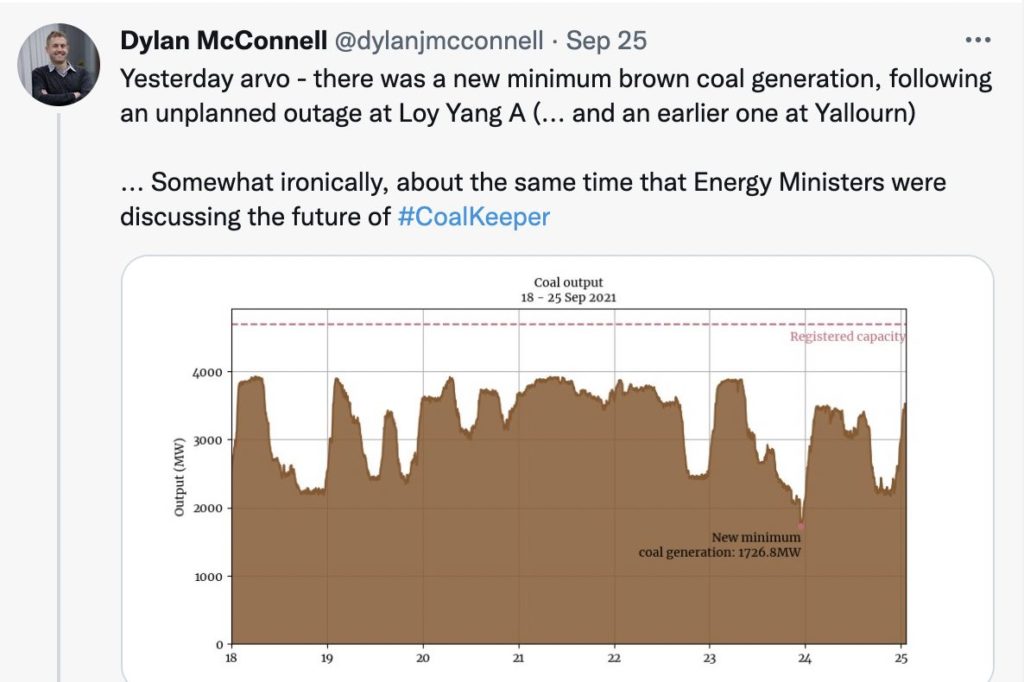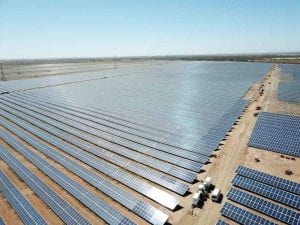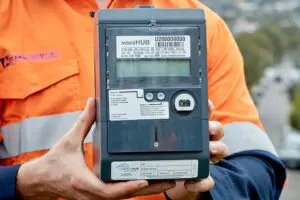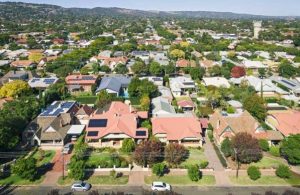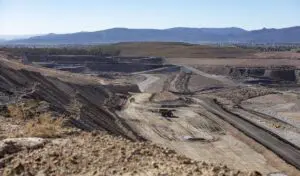The timing could hardly have been better. As State and federal energy ministers met on Friday to consider highly contentious new rules for Australia’s electricity market, the accelerating energy transition made its point abundantly clear: Renewables hit a record high while two major coal units tripped and shut down.
The meeting, held under the guise of national cabinet, occurred as new records for renewables were broken, with a new peak of 61.7 per cent in the main grid, and an average of around 60 per cent for the two hour meeting.
In Victoria, two coal units tripped during the day, sending the output of brown coal generation to a record low of just 1,726MW, just to underline the futility of a new market mechanism apparently designed to keep such generators in the system.
It was as though the weather, and physics, had conspired to make the very point that nearly everyone bar Angus Taylor and a couple of coal generators had agreed on, that the two most contentious market reforms put forward by the Energy Security Board need to be re-thought, if not dumped altogether.
The ESB had proposed two new mechanisms – a sort of capacity payment dubbed “coalkeeper” and a congestion management model for transmission fees dubbed “solar stopper” that were widely criticised, one for protecting the fossil fuel industry and the other for putting a stop to new renewable projects.
Taylor, who led a major media campaign in support of the capacity mechanism, said in a statement that ministers “agreed to progress further design work on a mechanism that specifically values capacity in the NEM.”
But the statement also made clear that the focus could be on “centralised” mechanisms such as a strategic reserve that the industry thinks is more manageable and supportive of new technologies rather than legacy coal plants.
The NSW, Victoria and ACT ministers had openly objected to the ESB’s favoured capacity mechanism, called a “physical retailer reliability obligation” (PRRO), saying it would end up paying coal generators to stay in the grid for longer than needed.
They favour direct talks with coal generators to manage their exit, and ensure there is enough new generation and dispatchable capacity in the market.
The other major win was the agreement to do “further design work to develop a congestion management model”, an acknowledgement of the concerns that the current proposal could create so much uncertainty new projects would be impossible to finance.
Clean energy advocated saw it as a victory. Simon Corbell, from the Clean Energy Investment Group, said it was now clear that if the PRRO was to go ahead, it would only do so if it was framed to support zero emission technologies only.
“And it may be that many states don’t see the need for it at all, which renders it a dead letter,” Corbell said.
He was less certain about the fate of the transmission charging issue, which CEIG sees as the greatest threat to new investment. “There is clearly a evel of skepticism on what it means for investors, and I would say there is significant opportunity to reshape and re-direct the work on the CMM.”
The idea was put forward by ACT climate minister Shane Rattenbury, who said he put forward amendments to ensure that the capacity mechanism only applied to new, zero emissions capacity to avoid unnecessarily prolonging the life of coal and gas power plants.
“While our proposal to target the capacity mechanism at new, zero emissions capacity was not agreed today, the guiding principles now reflect an intent to reduce emissions from electricity,” he said.
“The ESB will be subject to design principles, which should ensure the scheme will not be the subsidy for coal that many of us feared. The principles reflect the need to reduce greenhouse gas emissions from electricity, and recognise the emission reduction schemes of States and territories like the ACT.
“We also secured agreement to the ACT leading work towards incorporating emissions reduction into the National Electricity Objective (NEO). This is important for ensuring emissions intensity of generation is considered and reducing emissions is prioritised.
“All states and territories have a goal of achieving net zero emissions by 2050 at the latest, and this means rapidly reducing emissions from Australia’s electricity sector. Reflecting these goals in the NEO will help to ensure national coordination and appropriate investment certainty as we make this transition.”
The Clean Energy Council said it was “pleased and relieved” state and territory ministers did not approve or rush through reforms that had the potential to exacerbate uncertainty and risk to investors in our sector.
“Industry has serious concerns that the Energy Security Board’s original proposals to establish a capacity mechanism and introduce a congestion management model could undermine reliability, extend the life of existing coal generation and slow the transition to a clean energy system,” it said.
The ministers did endorse work on creating new renewable energy zones, and commissioned the ESB to continue to define the rules on distributed energy – rooftop solar, battery storage, EVs and demand management – that will play a critical role in the future grid.
However, the ESB – created in 2017 following a recommendation of the Finkel Review – will be reformed and consist only of the heads of the market operator (AEMO), the rule maker (AEMC), and the regulator (AER).
The current chair Kerry Schott and deputy chair David Swift will finish their roles when their terms end on October 31. The new chair of the ESB will be the head of the AEMC.
“Ministers commended Dr Kerry Schott, AO, and Mr David Swift for their professionalism and accomplishments in leading the ESB since its establishment in 2017,” the Taylor statement said.
The statement said the changes would help “pivot the ESB to implementing the Post-2025 market design project, ensuring Australia’s energy markets remain secure, reliable and affordable in the face of unprecedented structural change throughout the energy sector.”


